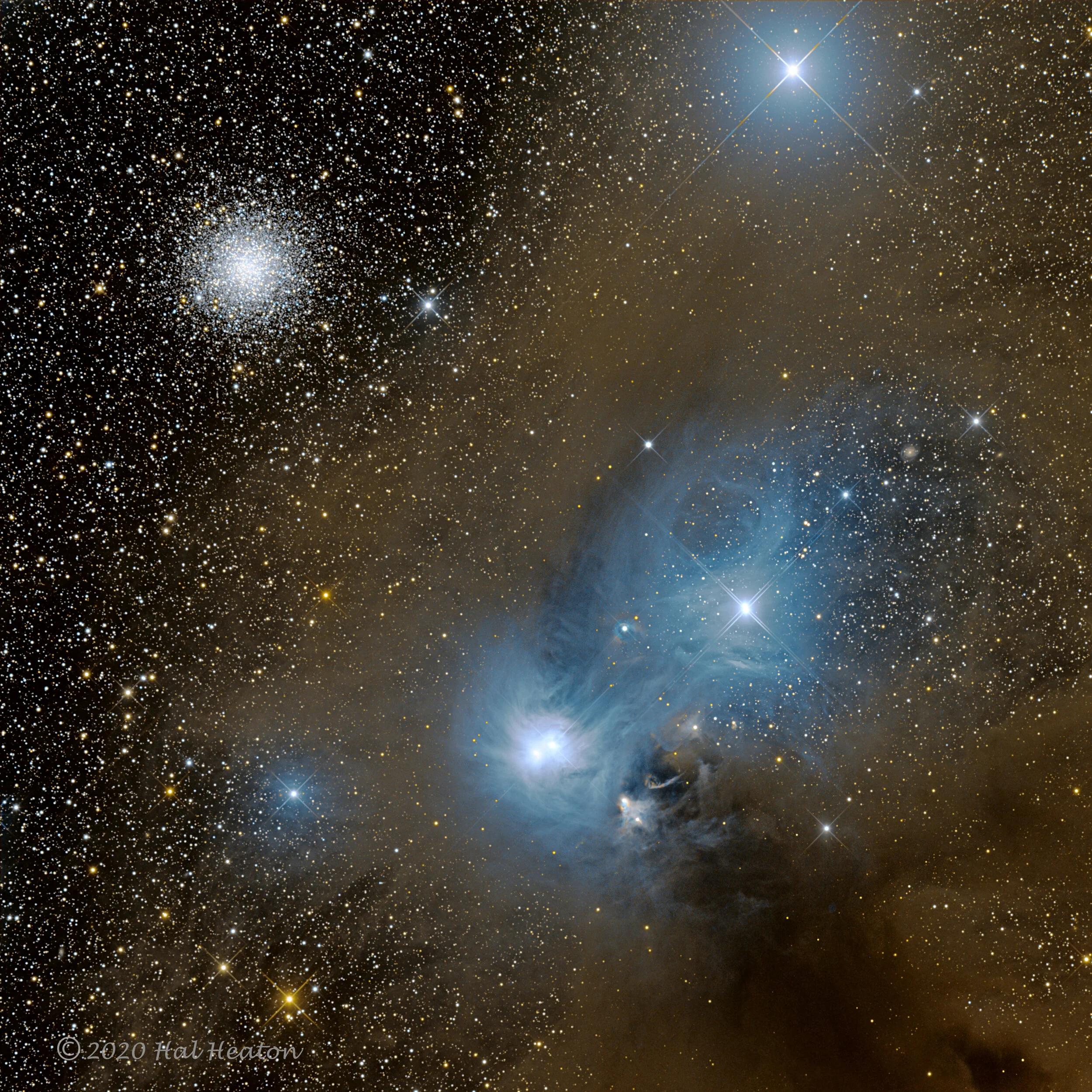
AAPOD2 Image Archives
The Sun between veils and clouds
Coronado Solarmax 3 Double Stack
Asi Zwo 178 MM
Copyright: Claudio Ciceri
Abell 370
Abell 370 is known for its gravitational lensing effect.
RECORDING DATA:Object: Abell 370Date of recording: November 2020 Distance: 6 billion light yearsExposure: 240 x 180 sec. (Total 12 hours)
Calibration: Darks / Flats / DarkFlats
Mount: Skywatcher EQ6-R PRO
Telescope: Lacerta Fotonewton 250/1000
Corrector: Lacerta GPU coma corrector
Filter: Astronomik L2 UV-IR Block 2 ″Camera: QHY268c @ Gain 0 at -15 °
CGuiding: ZWO OAG with ASI 120mm-s and
PHD2Resolution: 0.77 arcseconds / pixel
Software: APP / Photoshop CC
Copyright: Daniel Nimmervoll
The Eclectic NGC 6726 Region of Corona Australis
Image Description and Details :
Just below the teapot of Sagittarius in Corona Australis lies a strikingly-beautiful region containing several objects of widely differing ages and distances. Exquisite blue reflection nebulae (NGC 6726/27), lit by the embedded bright stars TY CrA and HD 176386, and IC 4812 (HD 176269 and 176270) appear to be connected by wispy blue filaments that span the dust lane SL-41. Nearly 200 lys closer than those stars, the wing-shaped nebula (NGC 6729) below those filaments is energized by the 310 ly distant R CrA. Closer still is the bright blue eclipsing binary star at the upper right, epsilon CrA, at 102 lys, which along with the far more distant globular cluster NGC 6723 span the "depth" of this 53-arcmin x 53-arcmin scene. The image was made using ten minute guided exposures taken through red, green and blue filters by an unbinned FLI ProLine 16803 camera mounted on Chilescope’s 0.5-m Telescope 2, which were stacked for 1-hr; north is left, and east is down.
Copyright Information: Hal Heaton
Iris Nebula and its interstellar dust friends
Image Description and Details :
The Iris Nebula is a reflection nebula in the constellation Cepheus, which is actually a patch of interstellar dust illuminated by a blue star. In the 2-panel-mosaic wide-field image, you can see that this area of the sky is actually filled with interstellar dust, but the other dust is not illuminated by nearby stars like the Iris Nebula. Image Telescope/Lens: SharpStar 150 2.8 HNTImage Camera: QHYCCD QHY268CMount: iOptron CEM 70Frames :301 * 300sIntegration: 25.1 hoursLocation: Milky Way Observatory, Kangbao County, Zhangjiakou, Hebei Province, China.
Copyright Information: Steed Yu
M78
Image Description and Details : This is an image of M78. Actually, M78 is the brightest reflection nebula (blue nebula near the center) of a nebula complex that includes NGC 2064 (the red nebula on the left of the image), NGC 2067 (the reflection nebula just on the other side of the dark nebula from M78) and NGC 2071 (the reflection nebula in the lower right of the image). This nebula complex is about 1,300 light years away in the constellation Orion, slightly above Alnitak, the leftmost star in Orion’s belt.Telescope: Planewave CDK-17 Camera: FLI PL16803 Mount: Paramount ME Luminance: 27x20 minutes (binned 1x1)Red: 16x15 minutes (binned 1x1) Green: 16x15 minutes (binned 1x1) Blue: 16x15 minutes (binned 1x1)
Copyright: Bernard Miller
NGC 2835
Image Description and Details :
NGC 2835 is an intermediate barred spiral galaxy with a massive black hole at its center. It is located in the constellation Hydra, at a distance of approximately 35 to 40 million light years from Earth, and is about 65,000 light years across. Seen face on with its tightly woven arms it has a sea shell like appearance.Imaged in LRGB on our Officina Stellare RiDK 700 at Obstech,Chile.OTA RiDK 700 FL 4900 mm, Mount OS Polar Fork, Camera PL 16803, Filters ChromaLuminance 15 hours 900sRGB 6 hours per channel 900s bin 2
Copyright: Mike Selby
The nebula of the head of the monkey in HOO
Image Description and Details :
Located in the direction of the Orion constellation about 1600 light-years, its apparent size is slightly larger than the full moon.the monkey's head nebula or simply NGC 2175 is an emission nebula that emits in different wavelengths mainly in HA but also in Sii and Oiii.In the center is the star catalogued HD 42088 which emits a strong ultraviolet radiation that ionizes the gases in the vicinity.In addition to ultraviolet radiation, this star emits powerful stellar winds that shape the nebula's gas cluster, helping to create several pillars (visible in the image) that form a star nursery.Technical data:- Takahashi fsq 85 F/D 3.8- iOptron cem60 ec mount- Zwo asi 1600 mm cooled pro- 130x300s HA : 10h50min- 145x600s OIII : 24h10min- 30x3x60s RGB : 1h30 min- Total integration: 36 hours 30 minutes- DOF: 27x101x35- Date: January 2021- Location: Ben Slimane MAO Observatory, Morocco.
Copyright: Aziz Kaeouach








